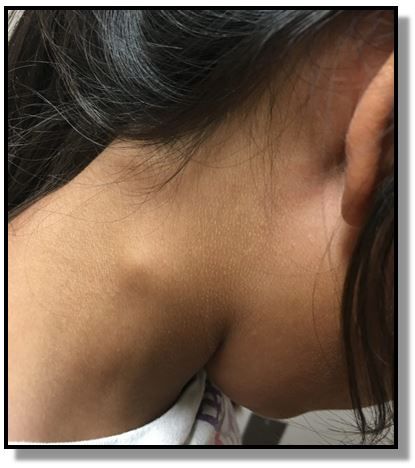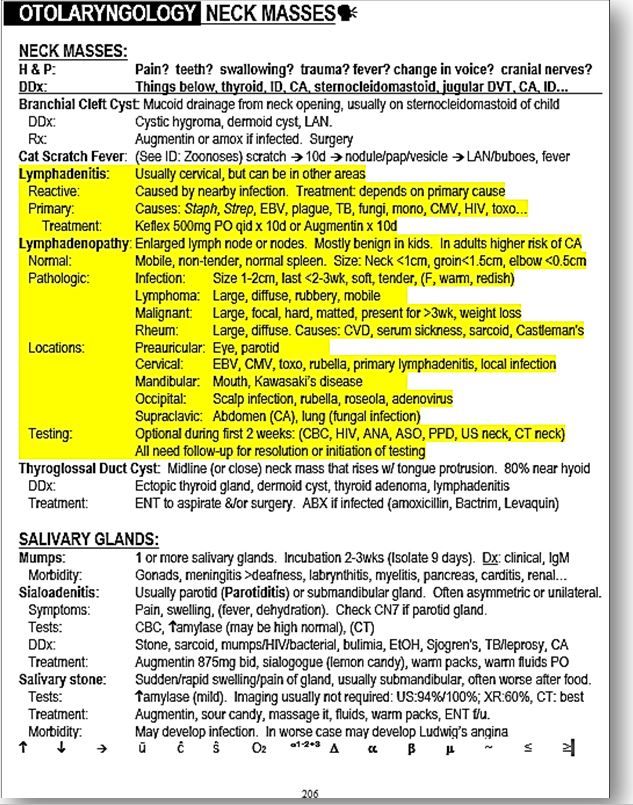- Clinical Technology
- Adult Immunization
- Hepatology
- Pediatric Immunization
- Screening
- Psychiatry
- Allergy
- Women's Health
- Cardiology
- Pediatrics
- Dermatology
- Endocrinology
- Pain Management
- Gastroenterology
- Infectious Disease
- Obesity Medicine
- Rheumatology
- Nephrology
- Neurology
- Pulmonology
Neck Mass in a Young Girl
The patient is 5-years-old without significant medical history. What is the differential diagnosis for a neck mass? What is your diagnosis?

History of present illness. A 5-year-old girl is brought to the emergency department for 5 days of cough and 2 days of painful right posterior neck swelling. The parents deny any fever, sore throat, dyspnea, or other swollen nodes they have noticed. She has no significant past medical history.
Vital signs, physical examination
Vital signs are normal. Physical exam is normal except for the right posterior cervical mass shown above.
Initial differential diagnosis
- Pneumonia
- Abscess
- Lymphadenitis
- Lymphoma
Diagnostic testing
Chest radiograph was clear.
Questions
1. What does the case image show?
2. What should you do next?
Answers
1. What does the case image show? The image shows an isolated cervical lymph node.
2. What should you do next? Diagnose lymphadenopathy and send home with a trial of Keflex.
Discussion
Neck masses and lymphadenopathy have many potential causes which can be narrowed by location, size, degree of pain and/or tenderness, and duration. Infectious causes tend to be painful and typically resolve within a few weeks, especially if treated with the appropriate antimicrobials. Malignant and rheumatologic causes tend to be less painful or painless and persist beyond 2 to 3 weeks. (See highlighted area of sample page at end of article for relevance of location of the enlarged nodes. Other causes of neck masses are included in the non-highlighted areas.)
The age of the patient is also relevant as most cases in children are infectious, whereas the majority of cases in adults are rheumatologic or malignant.
Testing is optional in the first few weeks. A CBC and/or imaging of the neck with ultrasound or CT may aid in the diagnosis, but a simpler approach can be empiric antibiotics with imaging reserved for cases that do not resolve within 2 to 3 weeks. If a salivary gland condition is suspected, serum amylase is often but not always elevated.
Treatment of neck masses depends on the suspected cause:
- Keflex is the first line agent for suspected primary lymphadenitis and was prescribed in this case.
- Augmentin is first line for sialadenitis, and Biaxin is first-line for cat scratch disease.
Patients diagnosed with lymphoma or a rheumatologic condition will require treatment by a specialist. Cysts or salivary stones may require surgery.
Case conclusion: Lymph node resolved over the next week and a half.
LYMPHADENOPATHY fromThe Emergency Medicine 1-Minute Consult Pocketbook

